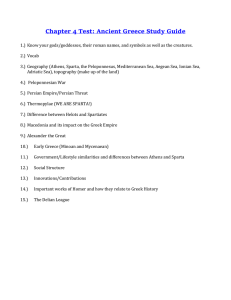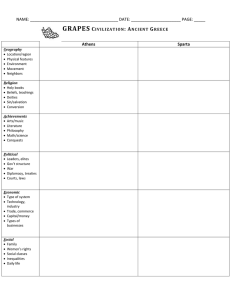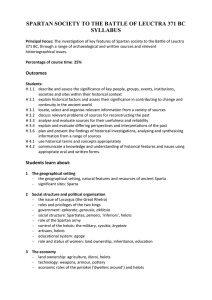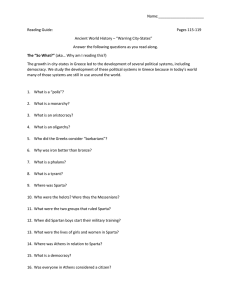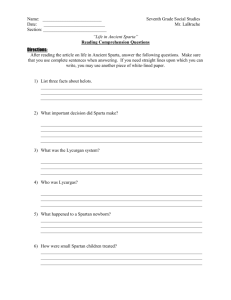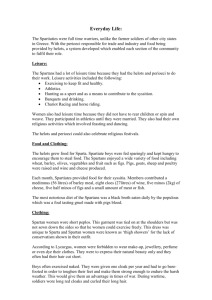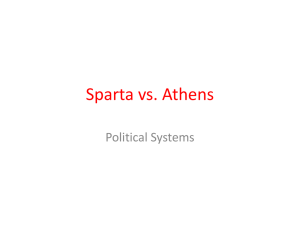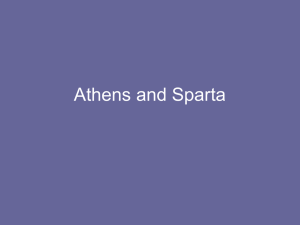City-States of Athens and Sparta #30 in the back.
advertisement
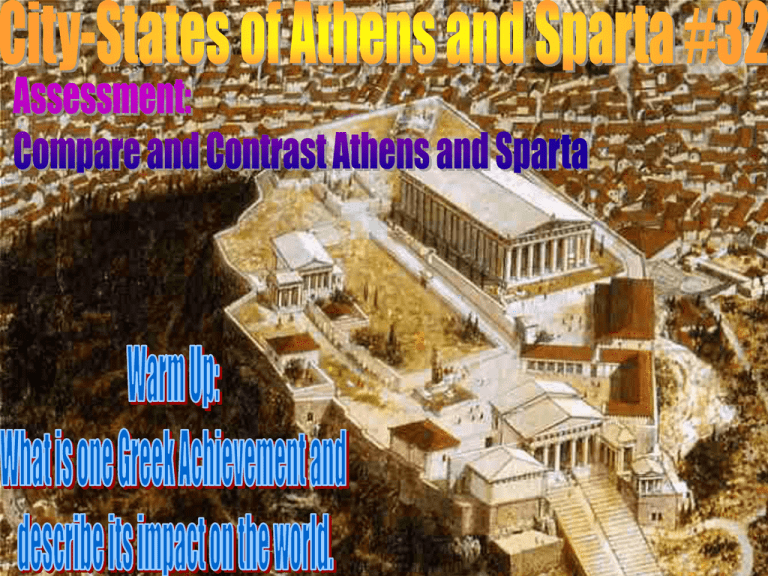
City-States of Athens and Sparta #30 Turn in Greek God Poster in the tray in the back. Geographical LimitationsLand cannot support a large population Greek colonization – young Greeks settled along the Mediterranean Developed trade – food, raw materials, knowledge, writing Polis or city-state *Necessary because of geography *Shared heritage, culture, religion *Geographic isolation *Independent self rule – no central theocratic ruler *Perfect size for democratic government MILITARY FORCE New citizen soldier - hoplites, with iron spears Organized into a phalanx Acropolis Hoplite Acropolis – fortified hilltop, for meetings and defense Strong naval fleets of war ships Triremes Phalanx Two main city-states, very different Sparta Athens Athens Focus: Mental power (philosophy) Knowledge and learning Studied science Studied philosophy Art “Enjoyed life” How did the Athenians deal with the poor? Citizenship Justice – economic, civil Right to vote Poor were included Sparta Focus: Physical Power (Military) Prepared to fight the helots Military school at 7 years old Service until 60 years old Physical training Trained not to think How did the Spartans deal with the poor? (helots) Enslaved them Forced them to work Became property of the state Had to pay high taxes Helots: Spartan peasant/slave class Outnumbered Spartans 10 - 1 Helots: In ancient Greece, slaves or serfs of the Spartans. They were probably the original inhabitants of Sparta, who were enslaved by the Dorian conquerors of that territory. The helots had virtually no civil or political rights. They were entirely the property of the state, which assigned them to work on the land of individual Spartans. The helots were required to provide a certain fixed amount of produce for their masters each year. The helots could be freed or sold only by the state. In wartime they were used as soldiers or as oarsmen in the galleys of ships. Page 31 • Compare and contrast Athens and Sparta • Due for stamp tomorrow.
